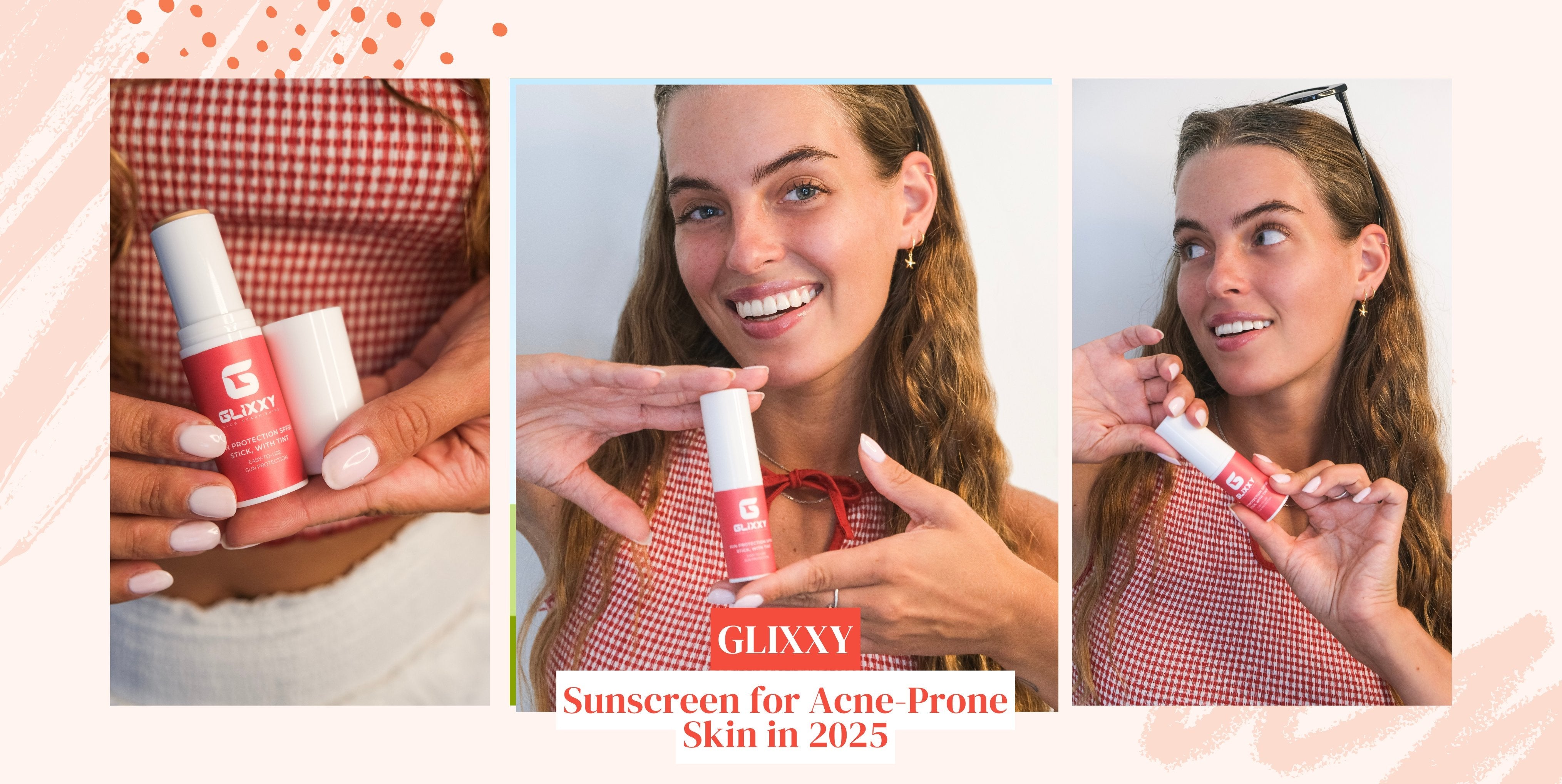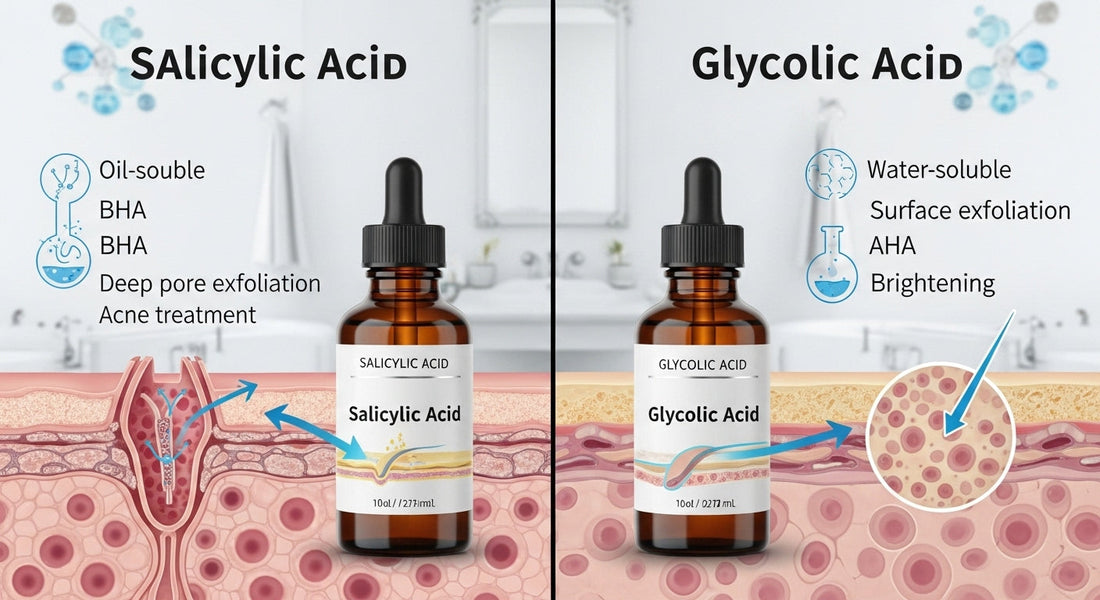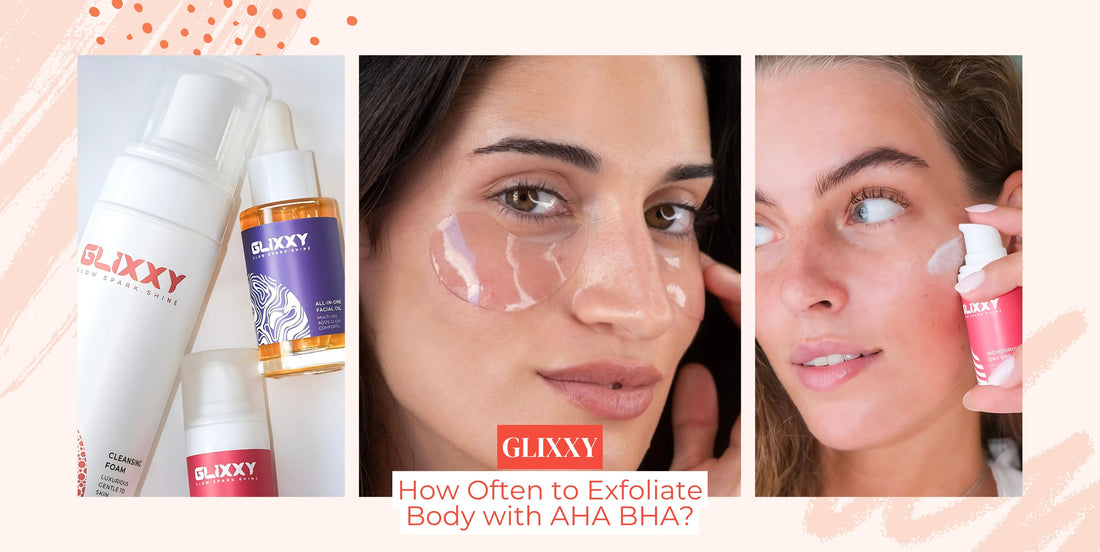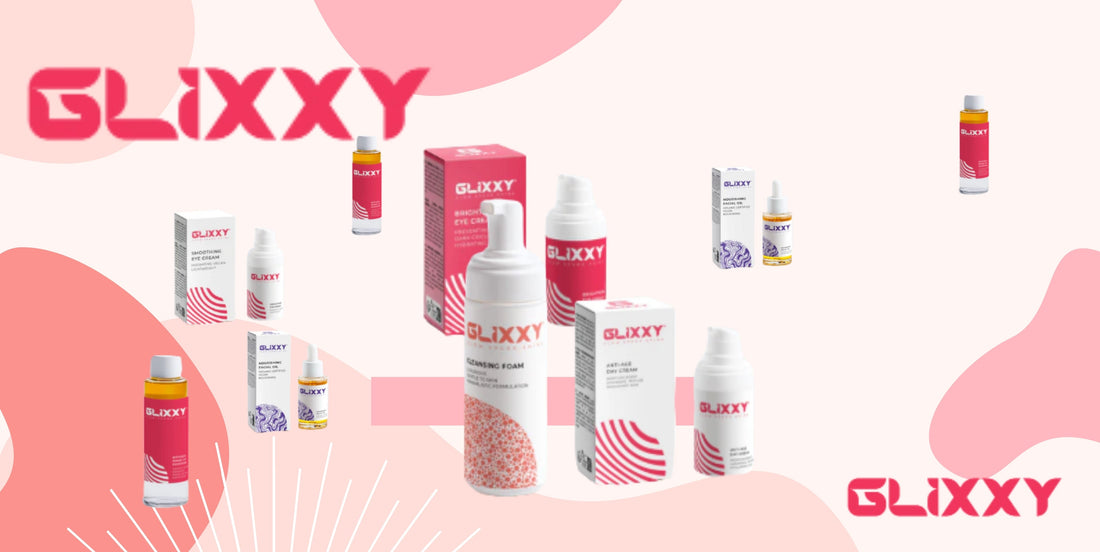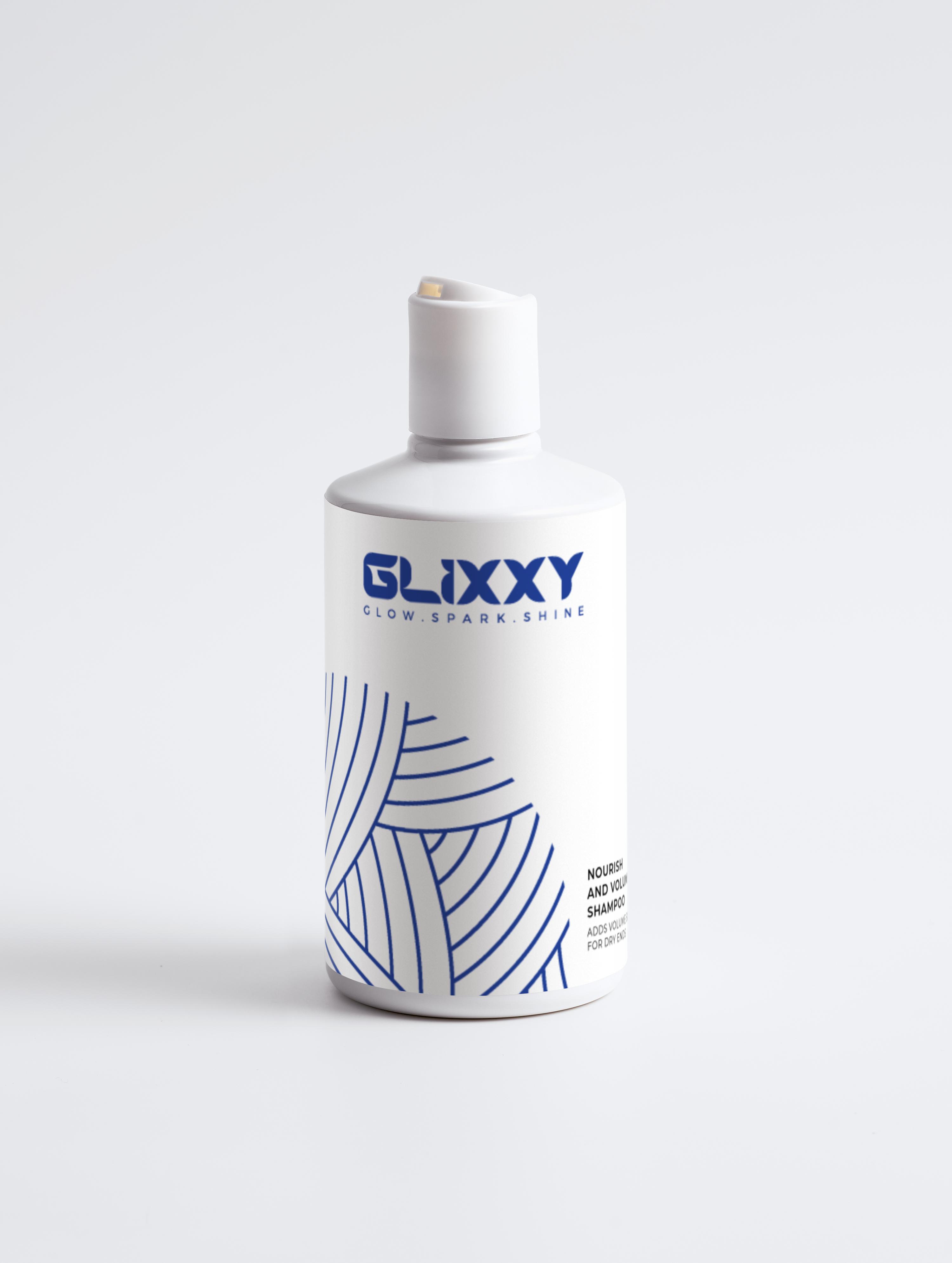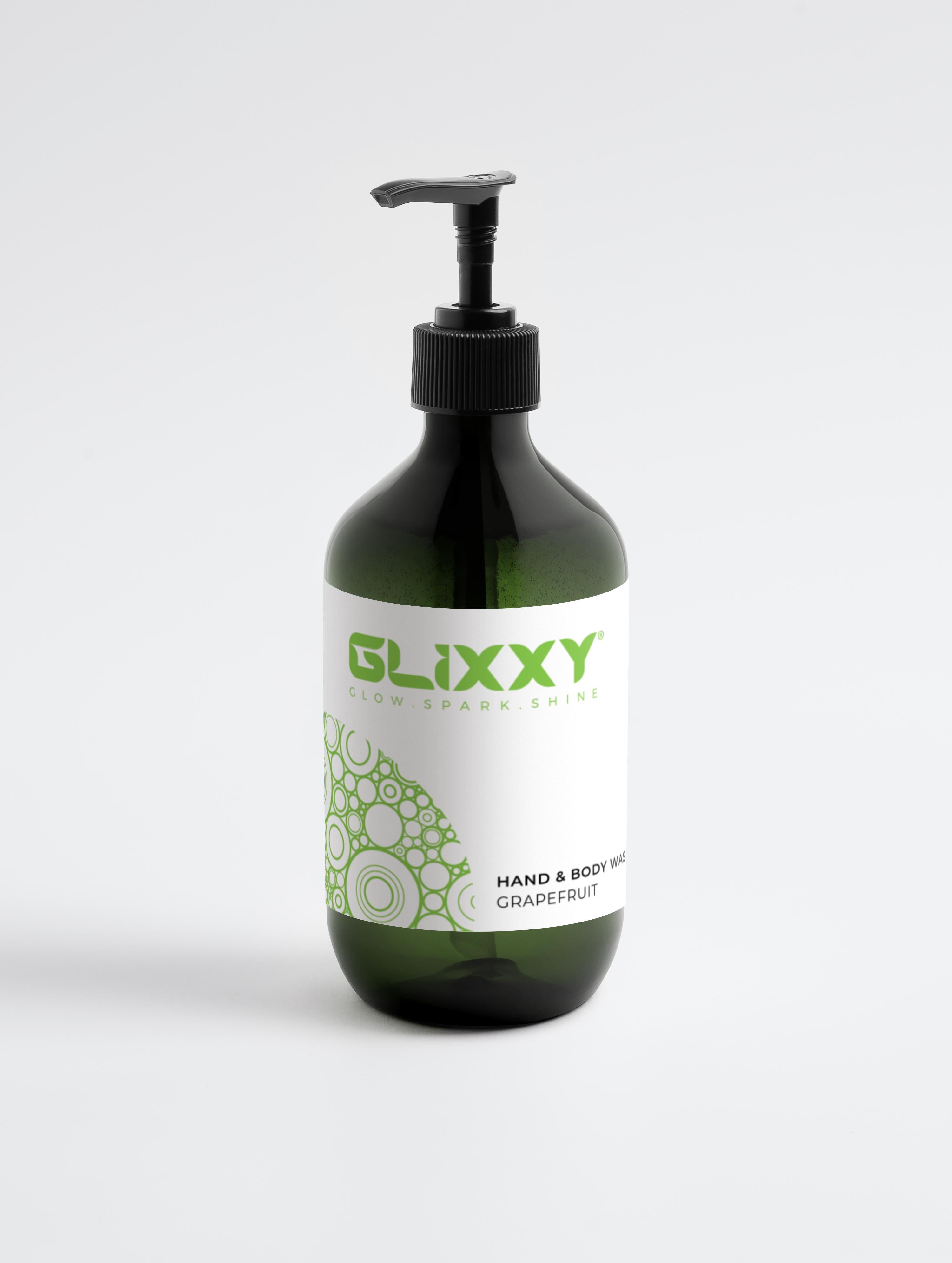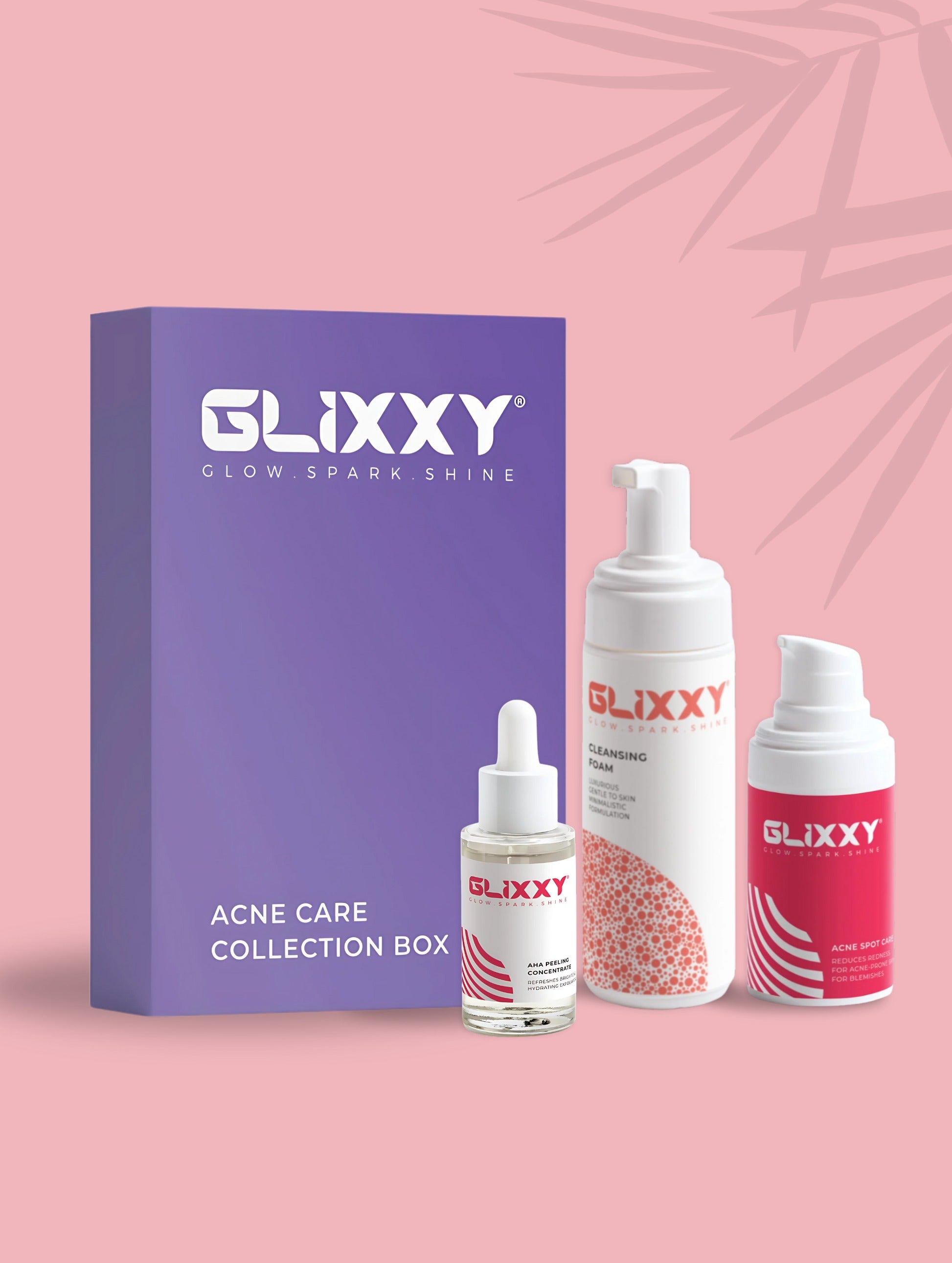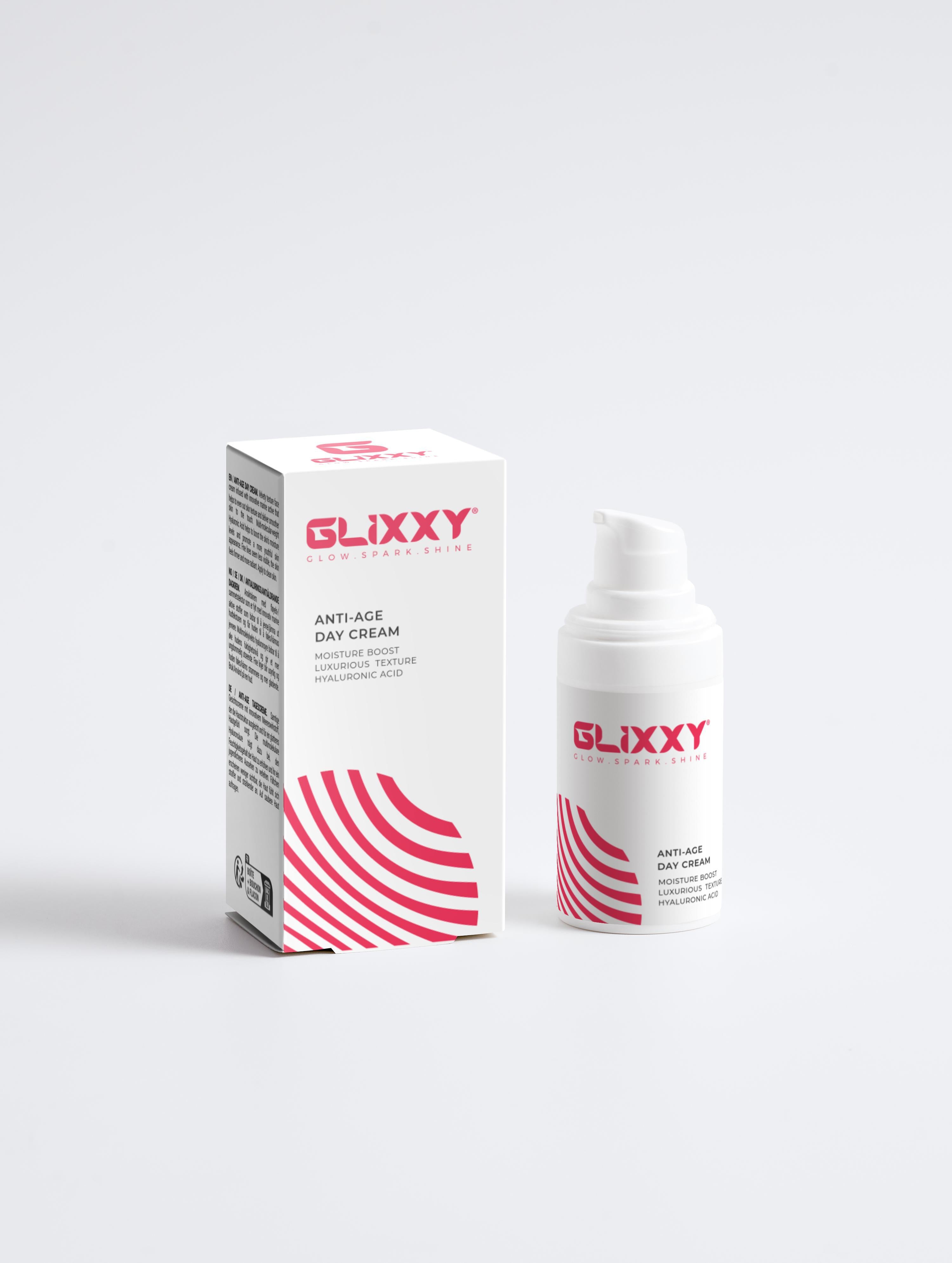Struggling to find a sunscreen that protects without clogging pores or leaving your face shiny? If you have acne-prone skin, the fear of breakouts can make SPF feel like a risky choice. However, sun protection is essential. UV rays worsen acne scars, trigger inflammation, and increase the risk of skin cancer. The solution? Lightweight, non-comedogenic sunscreens are specifically designed for individuals with acne-prone skin.
In this 2025 guide, we will explore:
- the best sunscreens for acne-prone skin.
- We will cover key ingredients and application tips
- Glixxy's natural COSMOS-certified products and user reviews, to help you choose confidently.
Ready to protect your skin?
What is Sunscreen?

Sunscreen is a skincare product designed to protect your skin from harmful ultraviolet (UV) rays from the sun. It works by either absorbing or reflecting UVA and UVB rays, preventing them from penetrating the skin, which can cause sunburn, premature aging, and skin cancer. Available in forms such as lotions, gels, or sticks. For acne-prone skin, non-comedogenic sunscreens, such as Glixxy’s Sun Protection SPF 50 Stick, are ideal for shielding the skin without clogging pores or triggering breakouts.
Pro Tip: Pick by exposure—but don’t skimp on amount. Use the two-finger rule (index + middle) for face/neck and reapply every 2 hours; choose SPF 50 for high UV or long outdoor time, SPF 30 for mostly indoors.
Why Sunscreen Is Non-Negotiable for Acne-Prone Skin

Skipping sunscreen because it feels heavy or causes breakouts? But UV rays are no friend to acne-prone skin. They deepen hyperpigmentation, prolong acne scars, and can even raise your risk of skin cancer. Non-comedogenic sunscreens are formulated to protect without clogging pores, providing lightweight coverage that keeps your skin clear and confident. Pair it with Glixxy's Niacinamide Gel Moisturiser to control oil and enhance your routine.
You Know That?
| Choosing SPF 30 vs SPF 50 matters—SPF 50 filters ~98% UVB vs ~97% for SPF 30, giving extra cushion during peak UV or long outdoor time. |
How to Choose the Right Sunscreen in 2025
Finding the perfect sunscreen for acne-prone skin doesn't have to be overwhelming. Here's what to prioritise:
- Non-Comedogenic: Choose sunscreens labelled "non-comedogenic" to avoid pore-clogging ingredients like coconut oil or mineral oil.
- Mineral vs. Chemical: Mineral sunscreens (zinc oxide, titanium dioxide) are gentler for sensitive skin, deflecting UV rays. Chemical sunscreens (such as avobenzone and octisalate) are lighter but may irritate.
- SPF Level: AAD recommends SPF 30+ for daily use; SPF 50 for extended outdoor time.
- Texture: Opt for matte or gel-based formulas for oily skin, or hydrating ones with hyaluronic acid for dry skin.
- Fragrance-Free: Fragrance-free options help reduce irritation.
|
Pro Tip: Create a comprehensive routine with Glixxy’s Sun Protection SPF50 to fade acne scars while protecting your skin from UV rays. |
Types of Sunscreens for Acne-Prone Skin
Here's a list of the sunscreens for acne-prone skin and every skin type.
|
SPF |
Type |
Key Ingredients |
Best For |
|
SPF 46 |
Mineral |
Zinc oxide, niacinamide |
Sensitive, acne-prone skin |
|
SPF 60 |
Chemical |
Avobenzone, homosalate |
Oily, combination skin |
|
SPF 50 |
Chemical |
Octisalate, octocrylene |
Budget-friendly, oily skin |
|
SPF 40 |
Mineral |
Zinc oxide, ceramides |
No white cast, all skin tones |
|
SPF 30 |
Mineral |
Zinc oxide, hyaluronic acid |
Dry, sensitive skin |
|
SPF 30 |
Mineral |
Zinc oxide, green tea extract |
Matte finish, budget-friendly |
|
SPF 50 |
Chemical |
Niacinamide, centella asiatica |
K-beauty, lightweight |
|
SPF 50 |
Mineral |
Zinc oxide, iron oxide |
Tinted, all skin tones |
|
SPF 35 |
Chemical |
Salicylic acid, vitamin B3 |
Acne-prone, affordable |
|
SPF 47 |
Mineral |
Zinc oxide, antioxidants |
Combination skin |
Also, explore Glixxy's Acne Care Collection Box to help prevent acne issues on your skin.
Key Ingredients for Acne-Safe Sun Protection
Not all sunscreens are created equal. Here's what to look for to keep your skin clear:
- Zinc Oxide: A mineral blocker that's anti-inflammatory and non-comedogenic, perfect for sensitive skin.
- Niacinamide: Controls oil, reduces redness, and fades acne scars.
- Hyaluronic Acid: Hydrates without clogging pores, ideal for dry or combination skin.
- Salicylic Acid: Exfoliates to prevent breakouts.
- Green Tea Extract: Calms hormonal acne and redness.
Avoid: Coconut oil, mineral oil, or heavy emollients, which can trigger breakouts.
How to Apply Sunscreen Without Triggering Breakouts

- Cleanse First: Begin with clean, dry skin. Shop Glixxy Cleansing Foam for a gentle cleanser that effectively removes oil and impurities.
- Use Enough: Apply a nickel-sized amount of sunscreen to cover face and neck thoroughly.
- Layer Lightly: Apply a lightweight Glixxy moisturiser first if skin is dry, then sunscreen.
- Pat, Don’t Rub: Gently pat sunscreen onto skin to avoid irritation.
- Choose Non-Comedogenic: Pick sunscreens labelled “non-comedogenic” to prevent clogged pores.
- Go Fragrance-Free: Opt for fragrance-free formulas to reduce sensitivity risks.
- Reapply Often: Reapply every 2 hours, especially after sweating or swimming.
- Remove Thoroughly: Double cleanse at night with a gentle, oil-based cleanser to remove sunscreen. Shop Glixxy Night Routine Collection Box.
- Patch Test: Apply a new sunscreen to a small area of skin to check for potential reactions.
- Add Benefits: Use Glixxy Sun Protection SPF 50 Stick, with tint, containing niacinamide or zinc oxide to soothe acne-prone skin.
Conclusion:
Finding the best sunscreen for acne-prone skin in 2025 doesn't have to be a struggle. Glixxy acne-safe SPF for everyone. Pair it with moisturiser and the acne care for a routine that fights breakouts while protecting your skin from UV damage. Daily sunscreen is your shield against hyperpigmentation, acne scars, and skin cancer, so don't skip it!
The reasons why our clients trust Glixxy natural COSMO-certified products.
"Glixxy sunscreen changed my skin in weeks,” raves a user on X (2025).
Ready to glow with confidence? Shop Glixxy's Sunscreen and start your journey to clear, protected skin!
| Disclaimer: This page offers cosmetic guidance only and does not give medical advice. |
FAQs:
What's the best sunscreen for acne-prone skin in 2025?
Glixxy SPF 50 is a top pick due to its non-comedogenic formula.
Can sunscreen cause acne?
Heavy or comedogenic sunscreens can, but non-comedogenic options won’t clog pores.
Are mineral sunscreens better than chemical sunscreens for acne?
Mineral sunscreens are often gentler for sensitive, acne-prone skin.
Can sunscreen help with acne scars?
Yes, sunscreen helps prevent UV-induced hyperpigmentation, which in turn aids in the fading of scars.
How often should I apply daily sunscreen for acne?
Apply every morning and reapply every 2 hours if outdoors.
Which ingredients should I avoid in sunscreen for oily skin?
Avoid coconut oil, mineral oil, and heavy emollients.


